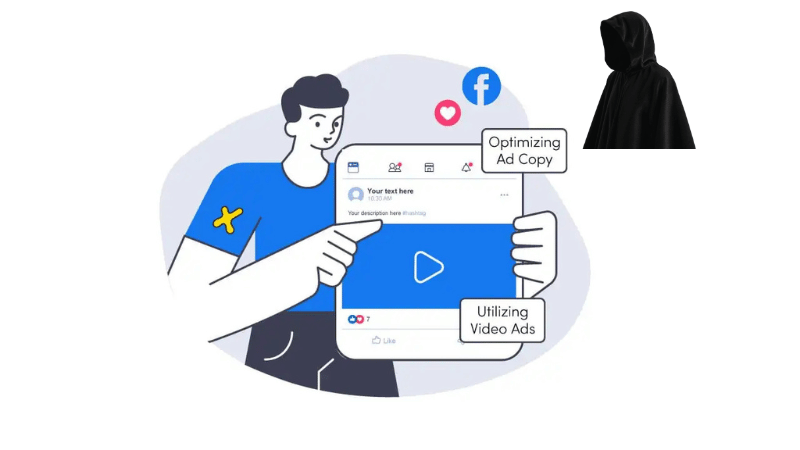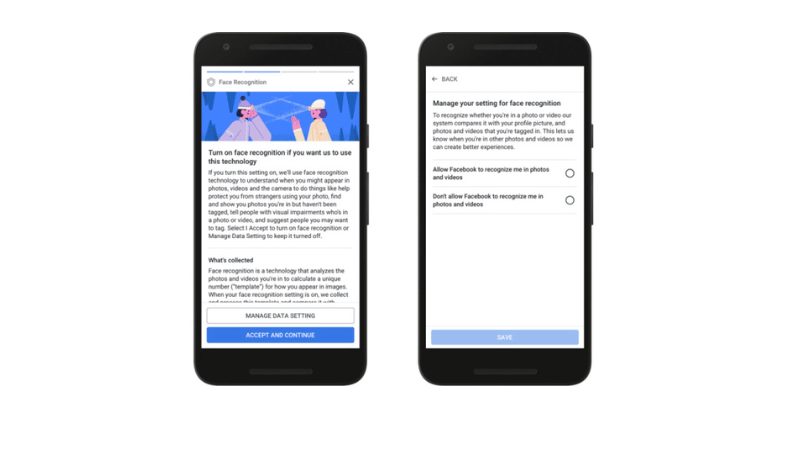Facebook Ads Cloaking is no longer an unfamiliar concept in the advertising world, especially for those who have sought to bypass the system to circumvent Meta’s policies. However, by 2025, Facebook Ads Cloaking is no longer a game but a fierce technological battle between Meta’s intelligent detection system and black-hat marketers. Meta no longer relies solely on manual reports but has deployed a range of AI, machine learning, and user behavior data mechanisms to expose every trick. This article will help you understand what Cloaking actually is, how Meta detects it, the severity of the potential penalties, and, most importantly, how to protect your ad account.
Facebook Ads Cloaking: Concealing yourself when running ads
In the world of digital advertising, Facebook Ads Cloaking is seen as a cunning yet dangerous tactic. Many marketers use it to bypass Meta’s review filters, making the system believe the ad is entirely legitimate while it actually leads users to a restricted landing page. This method can help ads get approved quickly and display widely, but it simultaneously pushes the account into an extremely high-risk zone.

The mechanism of Facebook Ads Cloaking
Cloaking operates based on the principle of displaying two different versions of content. Meta’s review system sees a clean, policy-compliant page. Real users, however, are redirected to a different page containing content that is not allowed to be advertised, such as gambling, crypto, weight loss, high-interest finance, or grey services.
This process is often executed through visitor identification codes, proxy servers, or user-agent analysis. Meta’s bot detection system will only see safe content, while real users are redirected to the true URL. This is why Cloaking is called a sophisticated act of concealment that is difficult to detect with the naked eye but easily exposed if Meta compares the actual access behavior.
The act of link masking is making the URL appear cleaner, more visually appealing, and trustworthy. This is a legitimate and common marketing practice that helps increase click-through rates without violating policies.
Cloaking is concealing the target URL, making it impossible for the Meta system to recognize the true content of the landing page. This is the forbidden form of Cloaking, and engaging in this behavior can lead to immediate ad account locking or a permanent risk flag. We advise that if your goal is to run sustainable advertising, choose to optimize your landing page to comply with policies rather than attempting to bypass the system.
Types of Facebook Ads Cloaking
Understanding the types of Cloaking will help marketers differentiate between dangerous behavior and grey areas to be avoided.
White-Hat Cloaking
This is the mildest form, usually involving only visual modifications of the link display, shortened URLs, or legitimate redirects. With no intention of deceiving the system, white-hat cloaking is often used for ad performance measurement or traffic management. Meta does not consider this a violation.
Grey-Hat Cloaking
The blurry zone between right and wrong. Some marketers use this technique to redirect users to a page with content that is not explicitly approved, such as certain health supplements or services that are difficult to classify. The system might let it pass, but the account is at risk of being disabled with just one re-scan. Grey-hat cloaking is often short-lived and unsuitable for long-term campaigns.
Black-Hat Cloaking
This is the most dangerous form. Black-hat cloakers actively deceive the review AI using complex tools: IP segmentation, cookie analysis, geo-targeting filtering, or even creating temporary fake pages to trick Meta. When detected, the entire ad account, Fanpage, domain, and Pixel can be permanently banned. We have seen many cases where the desire for quick profits led to the complete loss of their entire ad running system overnight.
Why marketers still choose this shortcut
The answer lies in competitive pressure and profit margins. Some restricted advertising sectors like finance, healthcare, pharmaceuticals, adult products, or international services often face difficulty getting approval. Cloaking becomes a tool that helps them display quickly, attracting customers before Meta has time to review.
However, choosing this shortcut only yields short-term benefits. As algorithms become increasingly sophisticated, Meta not only detects the cloaking behavior but also links data across accounts, IPs, and Pixels to trace the entire system. Once banned, restoration is nearly impossible.
We believe that transparency and proper optimization are the sustainable way forward. If you want to run effective ads, invest in clean content, optimize your landing page to comply with policies, and use genuine user data instead of bypassing the rules. That is the foundation of professional advertising in 2025.
Cloaking techniques

Modern cloaking techniques are not just simple link changes or added redirects. We observe that many current systems use Content Delivery Networks (CDNs) and API proxies to layer access, or JavaScript dynamic rendering to display different content based on the IP and device.
You might also encounter cloakers using AI detection bypass, meaning the system automatically recognizes Meta’s bot and serves the “clean” page immediately. Additionally, there is geo cloaking, segmenting content based on geographical location to avoid global scanning.
Despite their complexity and technical nature, all forms of cloaking go against the principles of transparent advertising that Meta pursues. The detection capability is becoming more accurate every day, and all attempts at concealment leave traces. Instead of trying to bypass the system, marketers should focus on content optimization and the actual customer journey. Sustainable effectiveness only comes when advertising is operated transparently, compliantly, and geared towards long-term value.
Optimal Agency is a digital marketing company founded in Vietnam, specializing in providing comprehensive digital advertising solutions, from market and customer behavior analysis to strategy development, deployment, and results evaluation. Specifically, their standout service is providing credible Facebook ad accounts on various major platforms like Facebook, Google, TikTok, and Bing—helping you easily “start” campaigns in various sectors without fear of account loss or restriction.
With over 12,500+ advertisers partnered and over 2,000+ campaigns currently running, Optimal Agency is committed to delivering stable, effective, and flexible advertising solutions for both small and large businesses. Whether you are in traditional business or a new online sector, their team supports you from choosing the right currency and time zone to 24/7 campaign monitoring to optimize budget and enhance ROI.
How does Facebook detect it? Penalizing sophisticated concealment
Meta’s technical team constantly upgrades its surveillance system to identify unusual signs in advertising. Campaigns with a high redirect rate, display content that differs between real users and the review team, are quickly placed on a watchlist. Meta’s goal is not only to detect Facebook Ads Cloaking but also to maintain transparency, ensuring the user experience is not manipulated by misleading content.

How the system collects risk signals
To help you visualize, Facebook collects hundreds of different types of signals from each campaign. Factors like redirect frequency, page load speed, hidden scripts, or encoded URL patterns are all recorded. When the risk score exceeds the allowed threshold, the campaign is automatically stopped, and the account enters a review phase.
AI and machine learning technologies play a central role in the detection process. The system automatically analyzes billions of access requests, comparing server responses to detect redirect chains or encoded scripts. When the retrieval data does not match between the real person and the review browser, the ad is immediately flagged as high-risk. In addition, Facebook also applies a mechanism of periodic random checks to detect ad patterns with a history of violations or suspicious behavior.
Meta’s team of verification specialists also uses the method of cross-checking between the landing page content and the content displayed in the ad creative. The system takes snapshots of URL variations, analyzes JavaScript strings, and tracks requests to the original server. Any minor difference between the interface for the reviewer and the end-user is noted. We have seen many accounts attempt to use geo cloaking or user-agent cloaking to trick the system, but the current AI is capable of simulating all access behaviors to detect such deception.
In some cases, the system also compares real user behavior on the ad with previous data to determine if there is a phenomenon of repeated redirection. If the landing page content is found to be distinctly different from the reviewed creative, the account will be warned for the first time. Repeated offenses mean the complete blocking of all associated payment methods, linked domains, and Business Manager accounts.
Penalizing cloaking behavior

Meta applies severe penalties for cases of deliberate content concealment. The mildest warning is a temporary halt of ad display. A higher level is locking the ad account, locking the Business Manager account, and disabling all access to the Ads Manager tool. In severe cases, Meta can permanently ban the personal Facebook account, while flagging the related domain or IP to prevent reuse.
We have encountered many businesses that attempted to use cloaking to bypass review in sensitive sectors like casinos, finance, pharmaceuticals, and cryptocurrency investment. However, the consequences often far outweigh the short-term benefits. Once the account is locked, all ad data, Pixels, and customer files are lost and are very difficult to recover.
Optimizing instead of confronting
If you have been flagged for cloaking, you still have a chance to restore the account by submitting an appeal along with documentation proving non-fraudulence. Information transparency, removing hidden scripts, and editing the landing page content will help increase the likelihood of re-approval. We encourage you to thoroughly check every factor before resubmitting a review request to avoid recurrence.
Meta is constantly improving its algorithms to protect the advertising platform. Compliance not only helps maintain stable advertising operations but also demonstrates respect for users. When advertising is transparent, the likelihood of distribution to the correct customer segment is higher, the quality score is better, and the cost per result is significantly reduced.
Instead of trying to bypass the system, invest in creative content, use a clear landing page, and implement a transparent privacy policy. Facebook prioritizes accounts with a reliable history and often reduces bidding costs for policy-compliant campaigns.
Frequently Asked Questions
Yes. Even with a private server, Meta still analyzes abnormal behavior through fingerprinting, redirects, and real user data.
It is extremely rare. Meta rarely restores accounts that have violated cloaking rules; the only solution is to create a new, legitimate Business Manager.